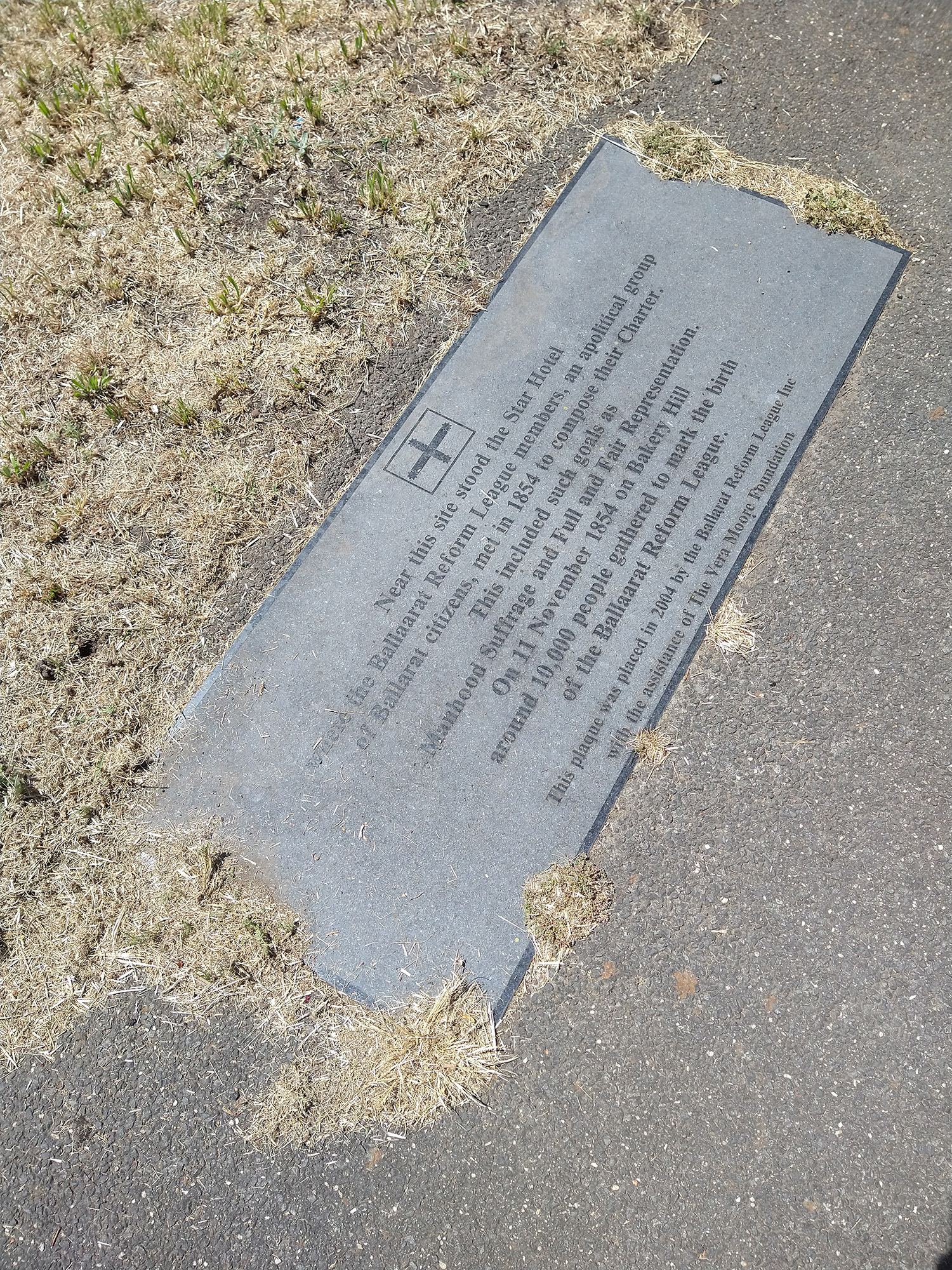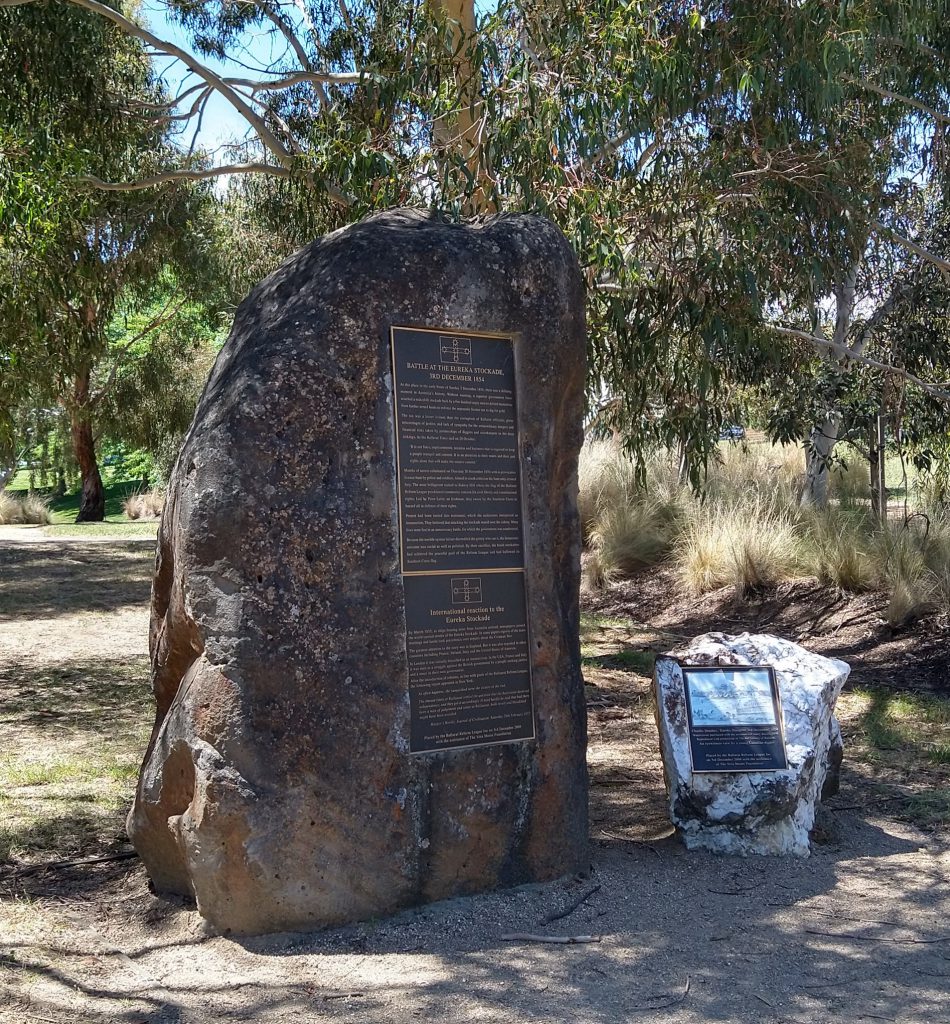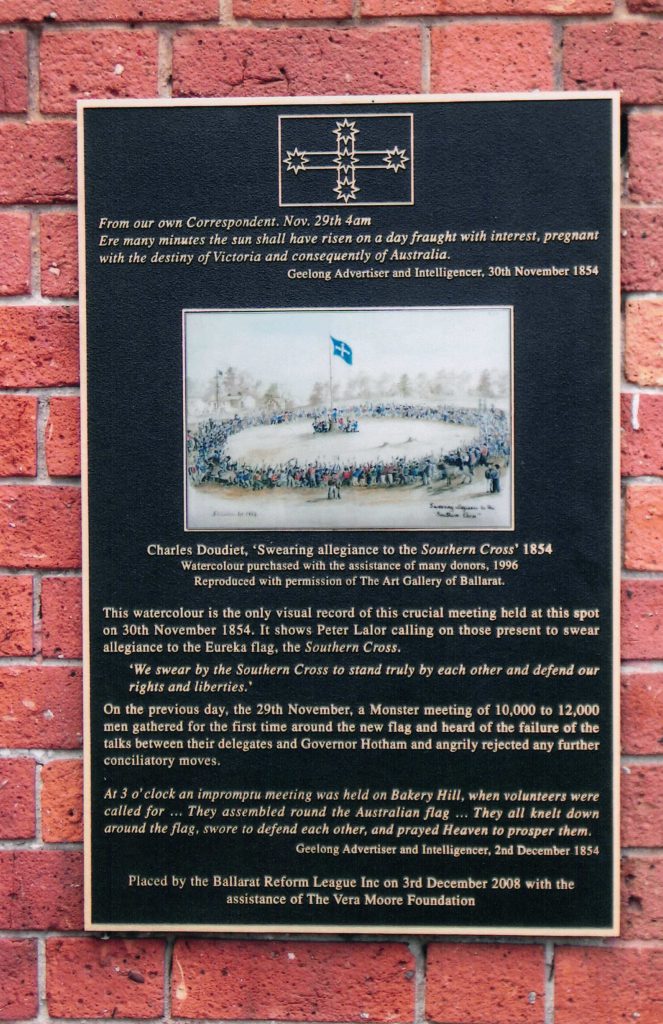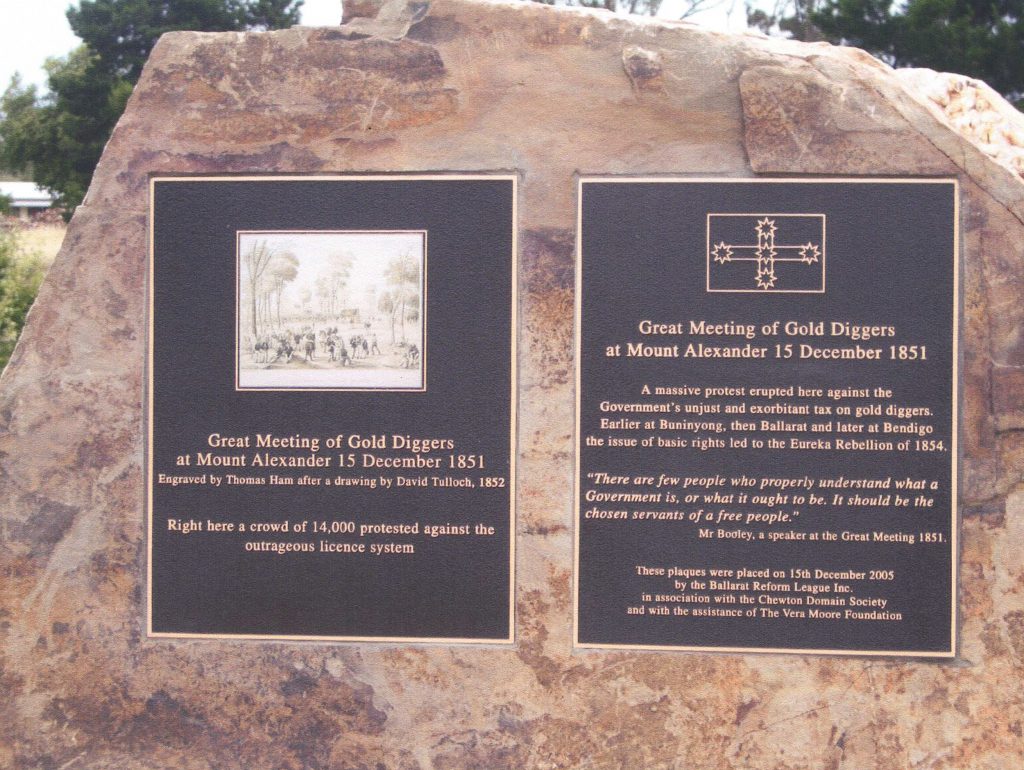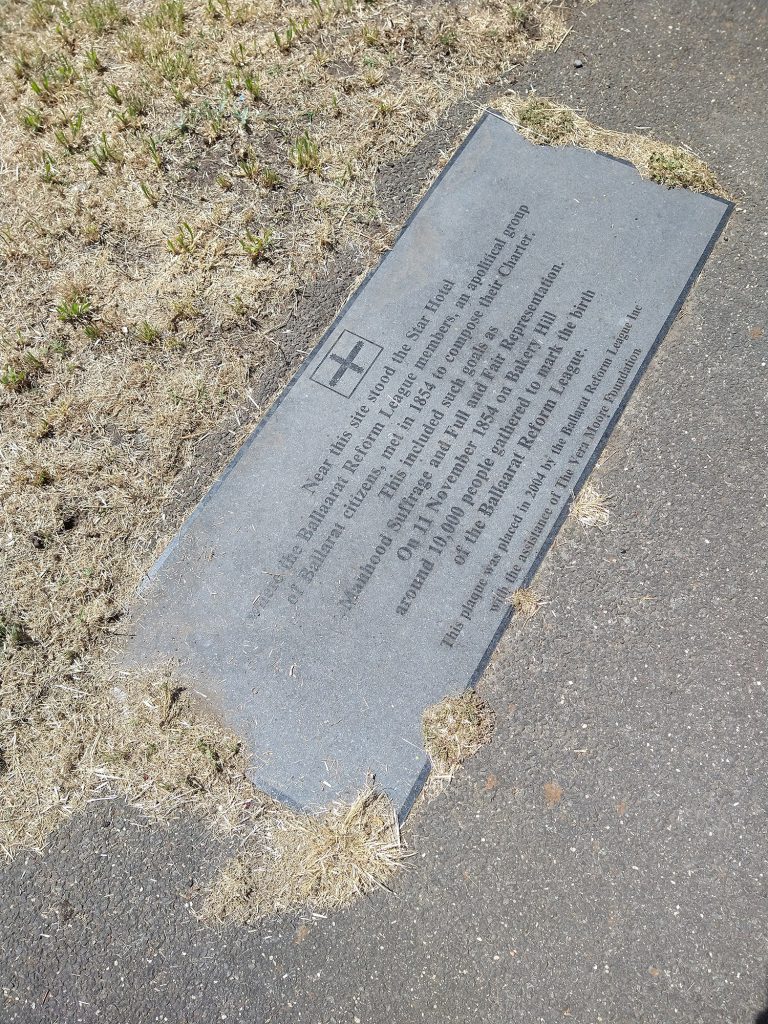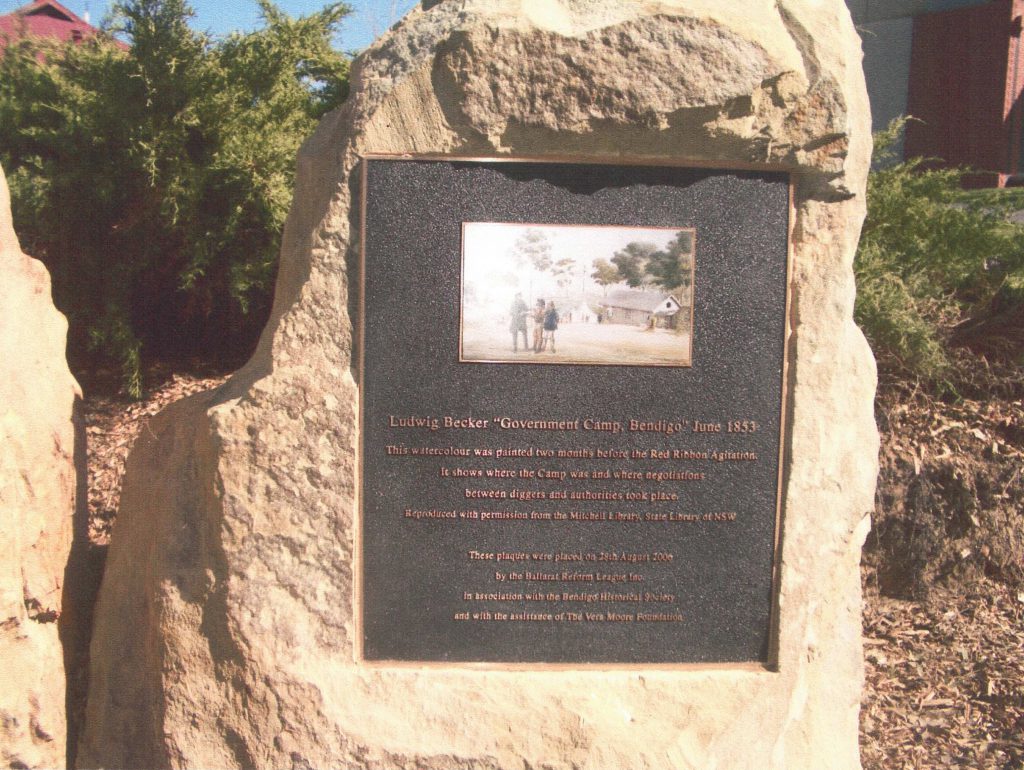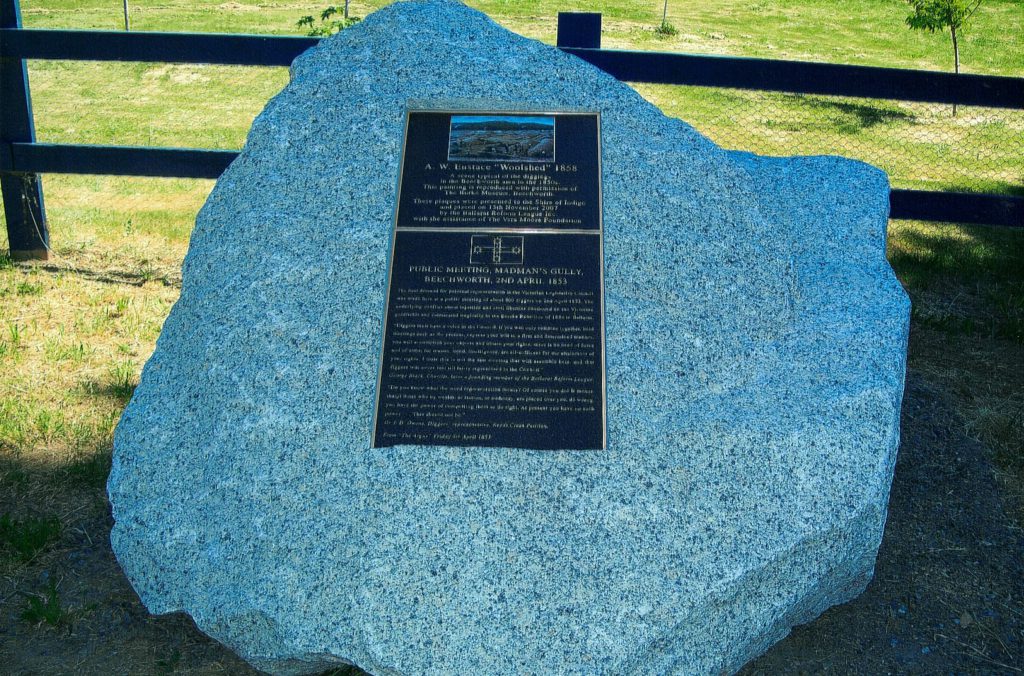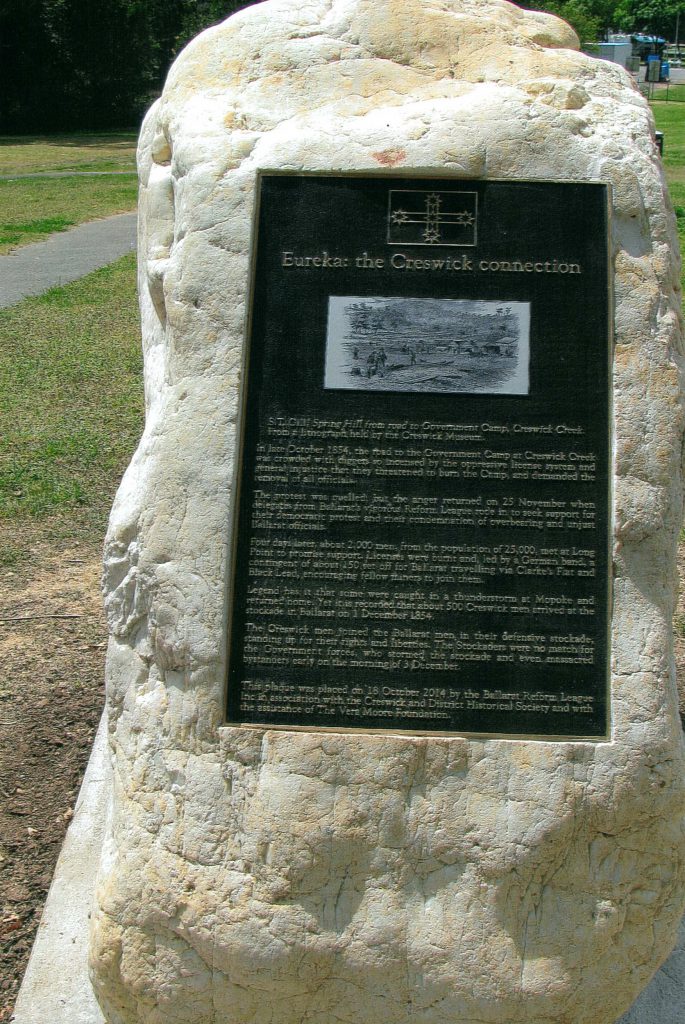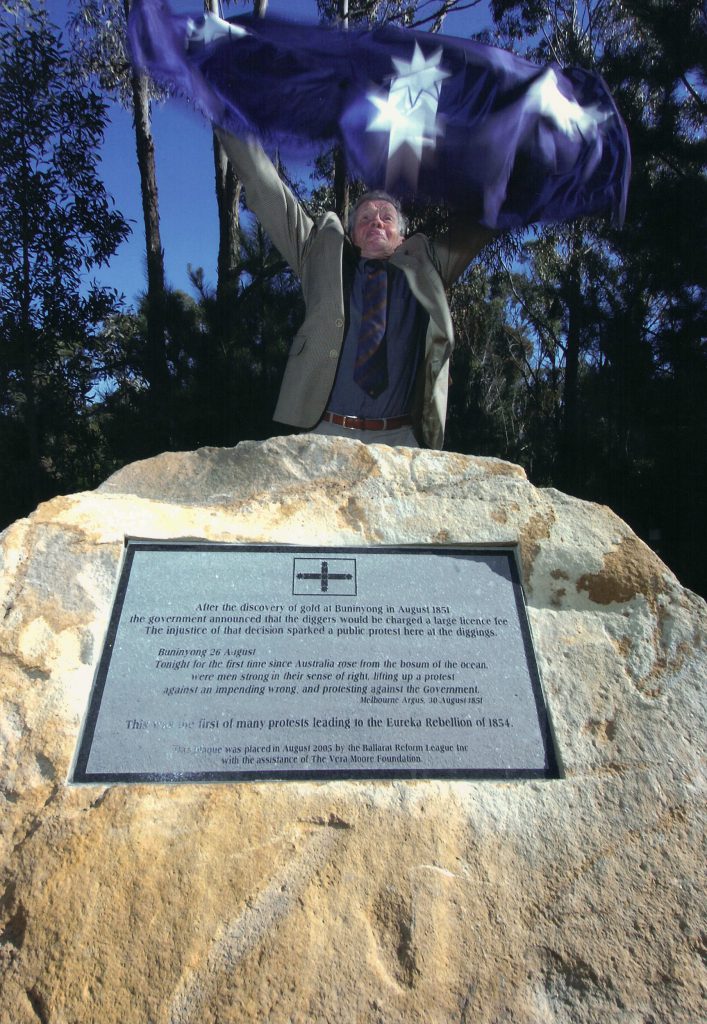about us
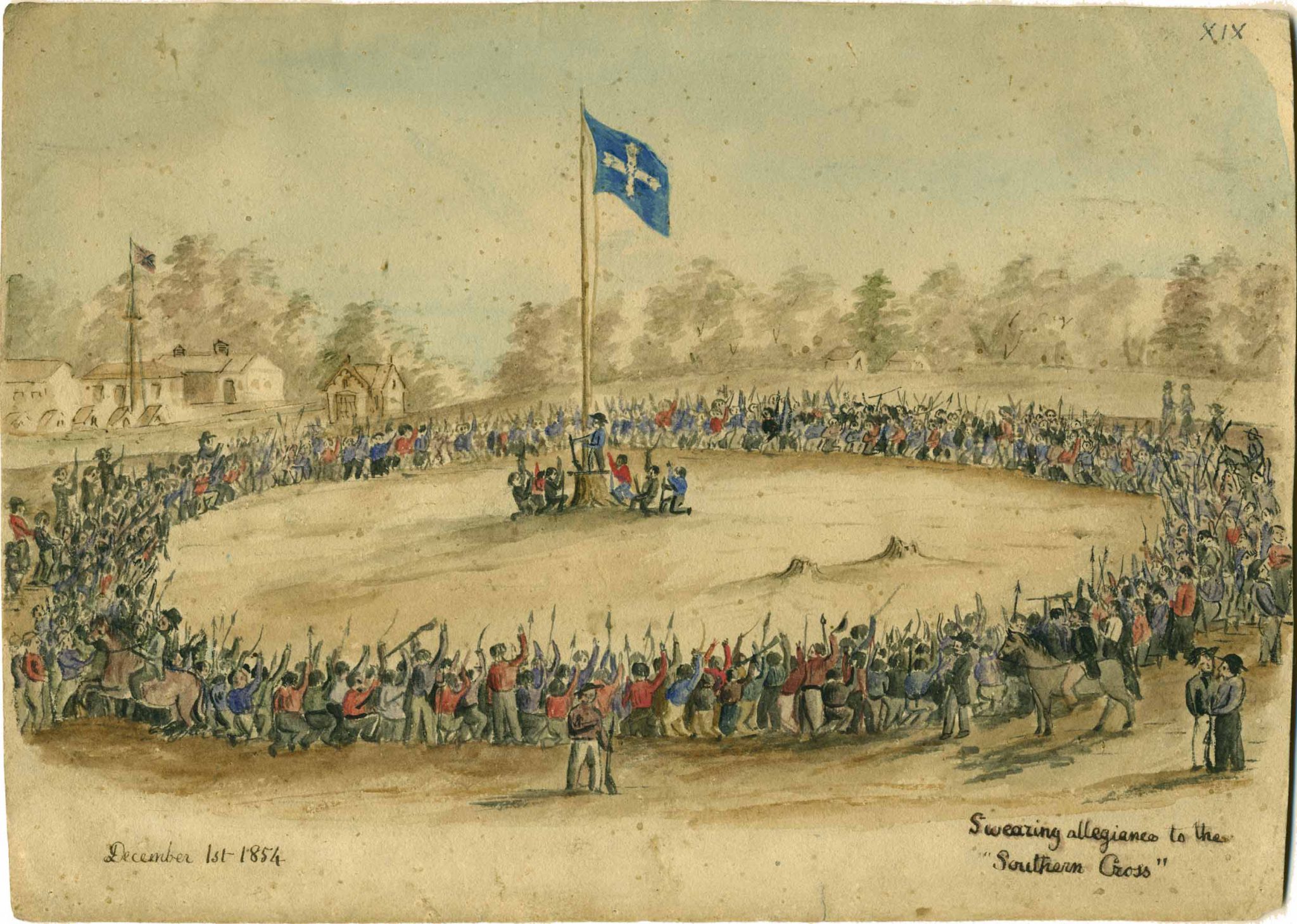
About Ballarat Reform League
Our first project, The Monument Project, was launched in 2003 to place plaques and monuments on sites across the Victorian goldfields where significant actions occurred that culminated in the formation of the Ballarat Reform League at a public meeting on 11 November 1854. These actions grew to a climax on 3 December 1854 in the battle at the stockade on the Eureka lead in Ballarat.
The project was made possible by the generous support of The Vera Moore Foundation and with advice from Professor Weston Bate.
To date plaques and monuments have been placed at the following sites:
monuments
Bakery Hill Protest Meetings from late 1853 to early 1855
Many large protest meetings were held at Bakery Hill. It was here that the diggers and storekeepers gathered to discuss their grievances and their struggles with the authorities.
There were at least 8 meetings prior to the Eureka battle and at least 3 after the event.
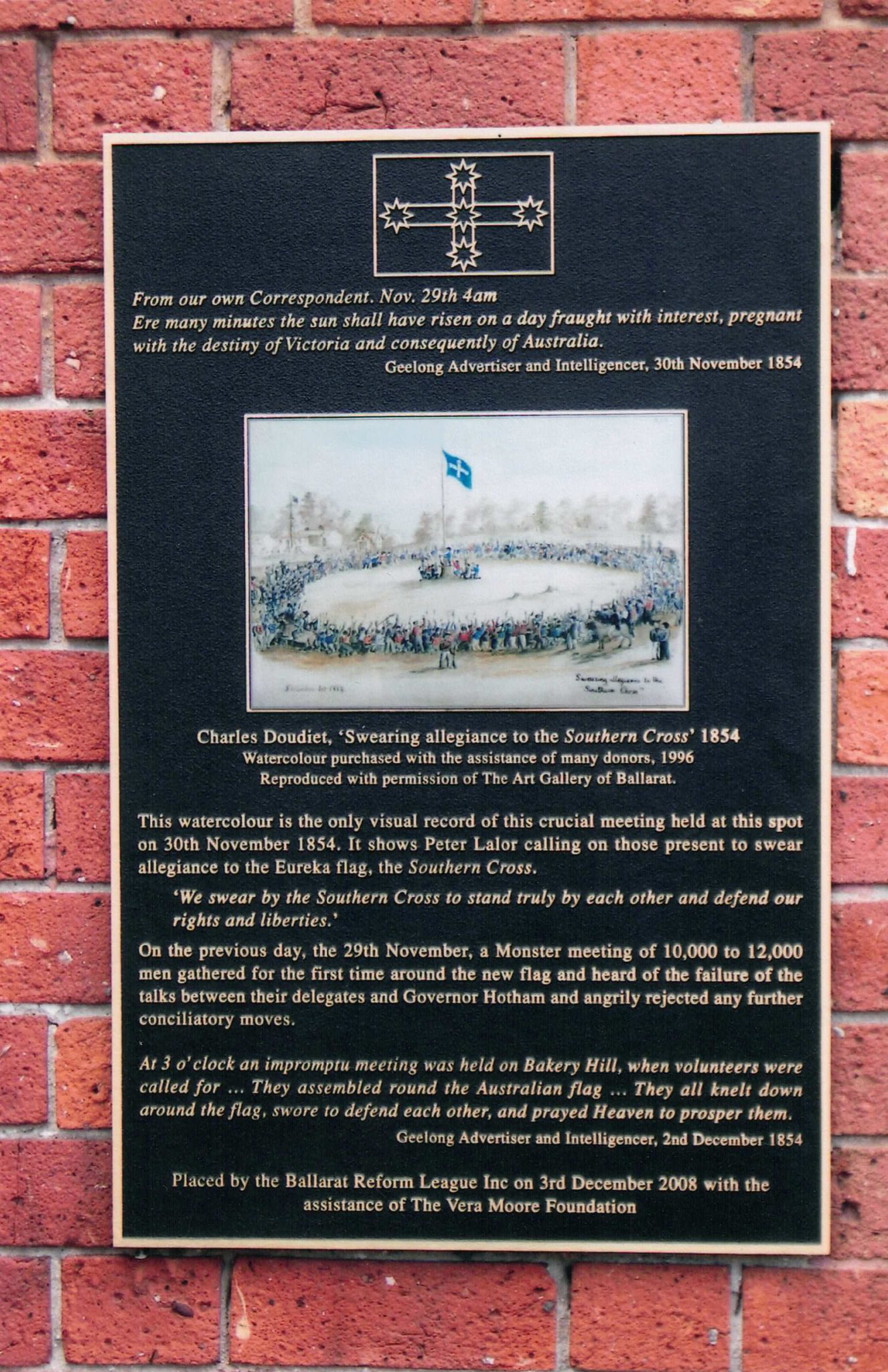
Eureka Stockade 3rd December 1854
At this place in the early hours of Sunday 3rd December 1854, there was a defining moment in Australia’s history. Without warning, a superior government force attacked a makeshift stockade built by a few hundred angry men to defend themselves from further armed hunts to enforce the unpopular licence tax to dig for gold.
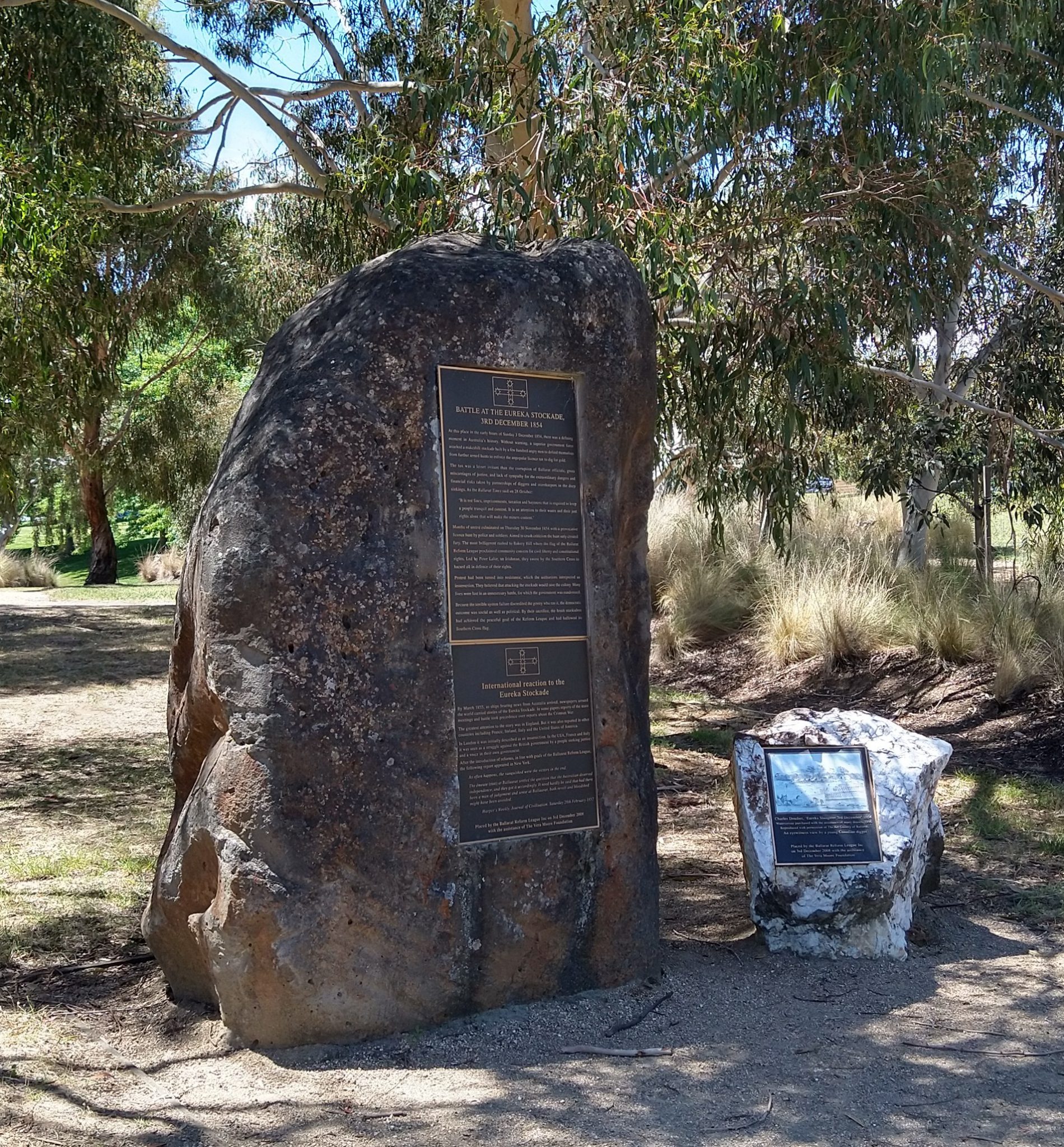
In pouring rain, about 800 diggers attended a public meeting on 2nd April 1853. It was a continuation of the underlying conflict about injustice and civil liberties. The diggers were disappointed that repeated requests for action to address injustice had been ignored or brushed aside. The demand for representation was seen as the only way to be heard and ‘accomplish your objects and obtain your rights.’
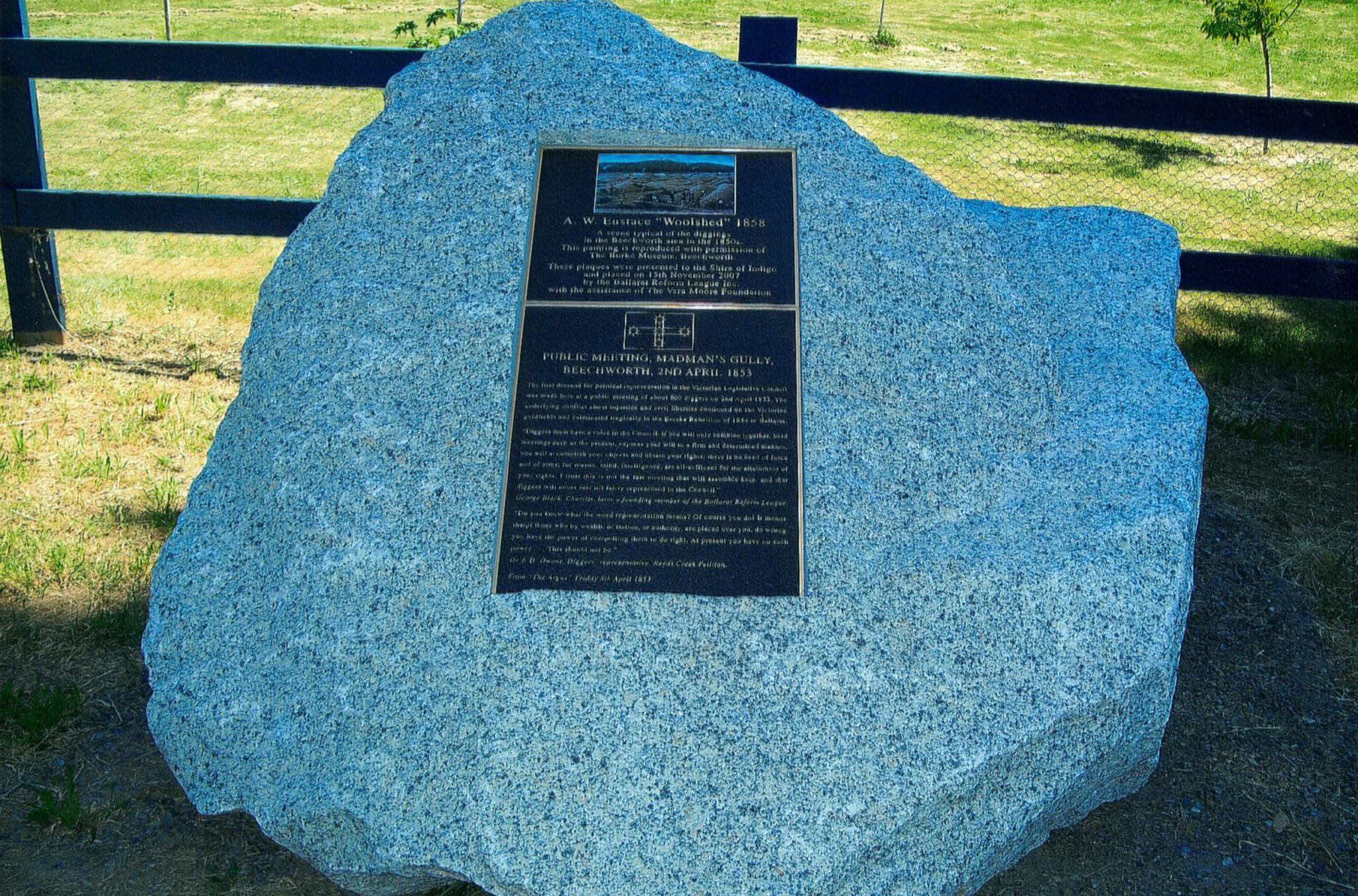
The Red Ribbon Agitation
The Bendigo Goldfields Petition of mid 1853 was initiated by the Anti-Gold Licence Association which was formed on 6th June 1853. It was signed by more than 5,000 people from Bendigo and other goldfields. It has been described as a dignified and sensible document. It condemned the unjust licence and the manner it was enforced and called for land to be made available for sale and for wider franchise.
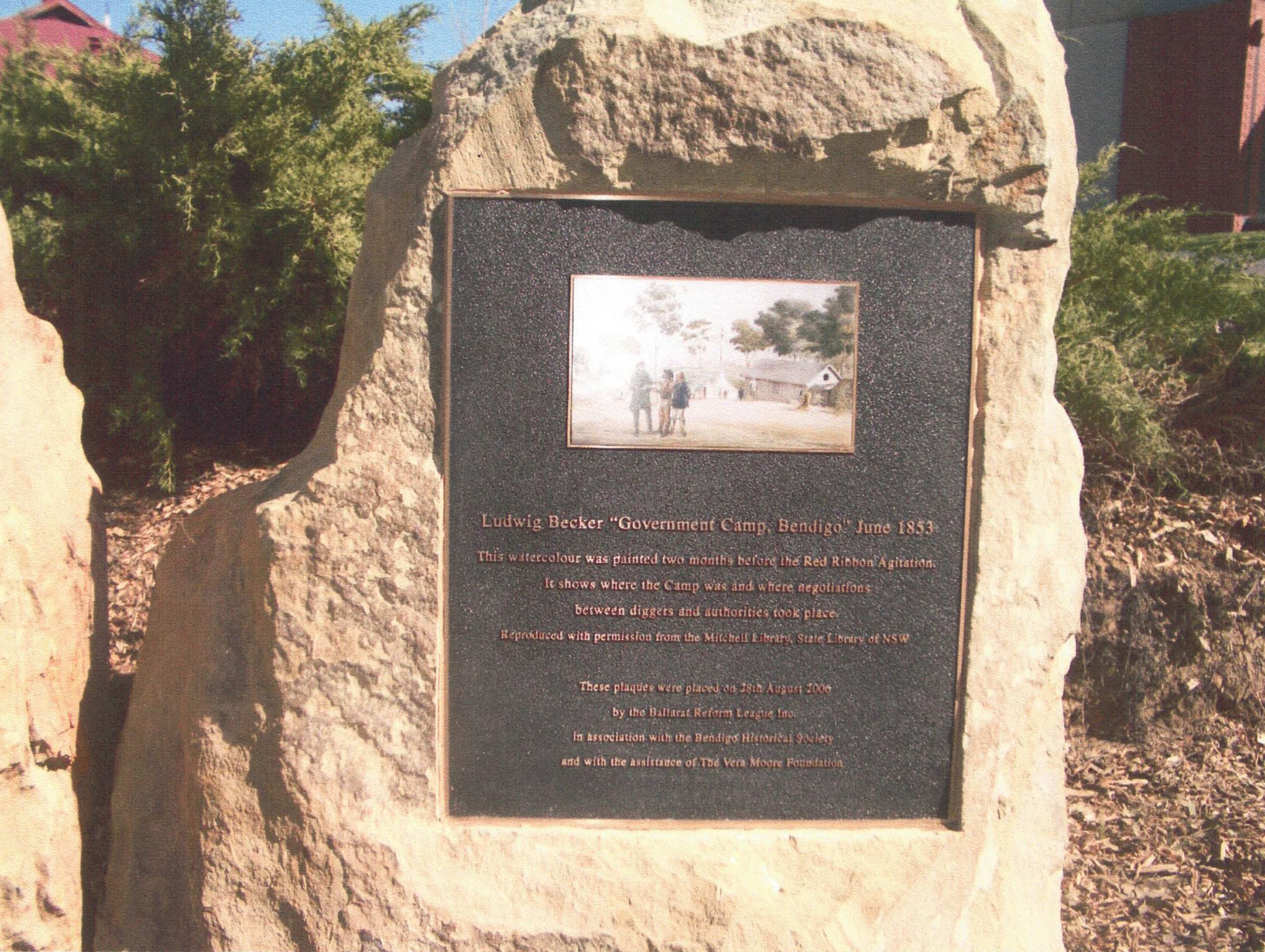
The first protest meeting.
In early August 1851, just over a month after Victoria became a separate colony, gold was discovered in Buninyong.
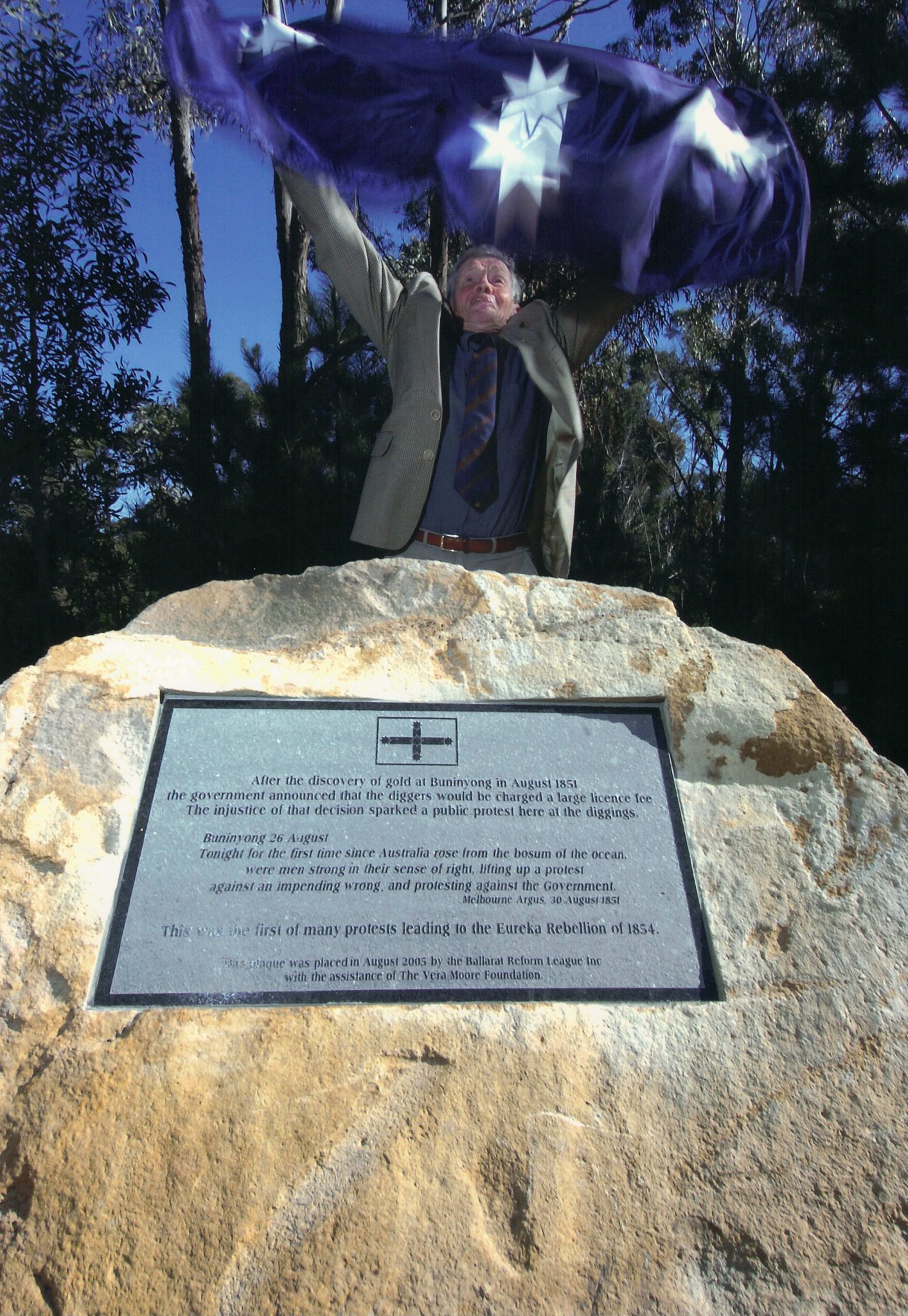
Agitation Hill, Mostyn Street. 1853
We were unable to place a monument here.
This is now the site of the handsome sandstone Christ Church. It overlooked the hated government camp. A perfect spot for a protest meeting.
Eureka: the Creswick connection
In late October 1854, the road to the Government Camp at Creswick Creek was crowded with diggers so incensed by the oppressive licence system and general injustice that they threatened to burn the Camp, and demanded the removal of all officials.
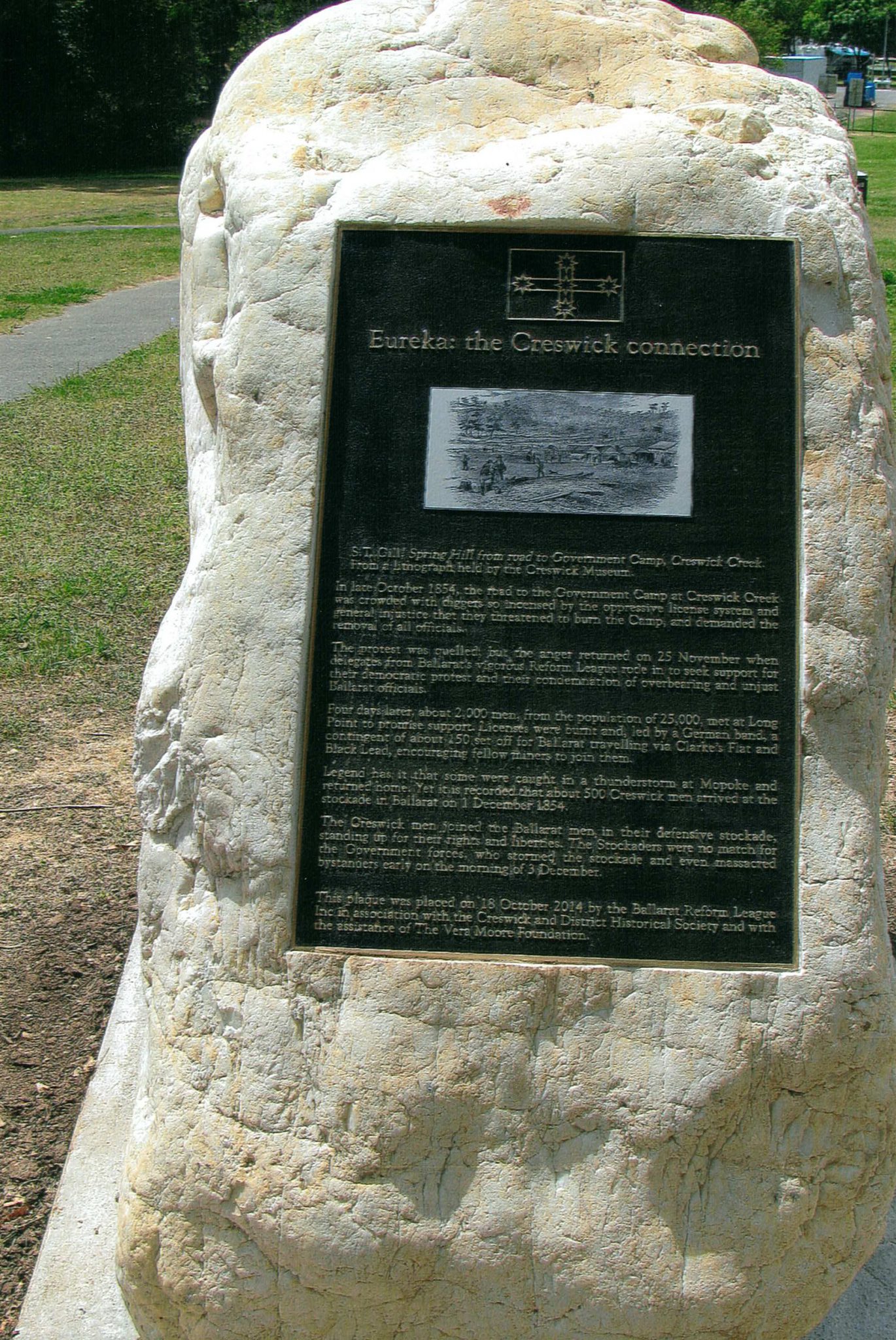
We were unable to place a monument here.
There was shock and outrage among the general community in Melbourne on learning of the government’s actions and the lives lost at Eureka.
The reaction in Melbourne turned the diggers’ defeat into a victory.
The First Monster Meeting December 1851
Alluvial gold in abundance was found in the Mt Alexander area (now Castlemaine) and this led to a rush of people in November and December 1851.
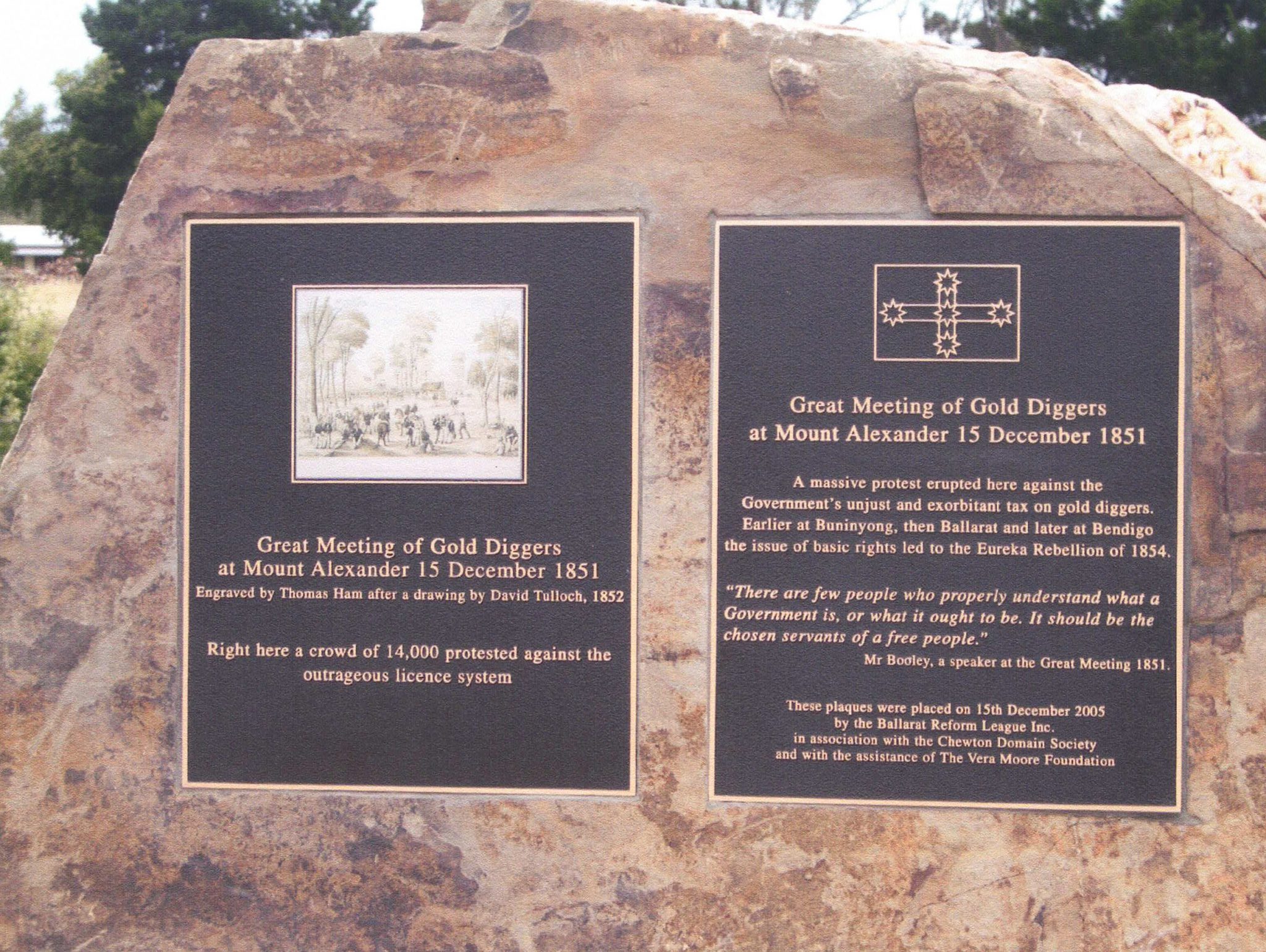
The stirrings of the beginnings of democracy on Australia were discussed here in the Star Hotel in late 1854. Concerned citizens met here. Their agenda was of social and political reform. To this end they wrote a Charter and designed and produced the Eureka flag to rally around.
